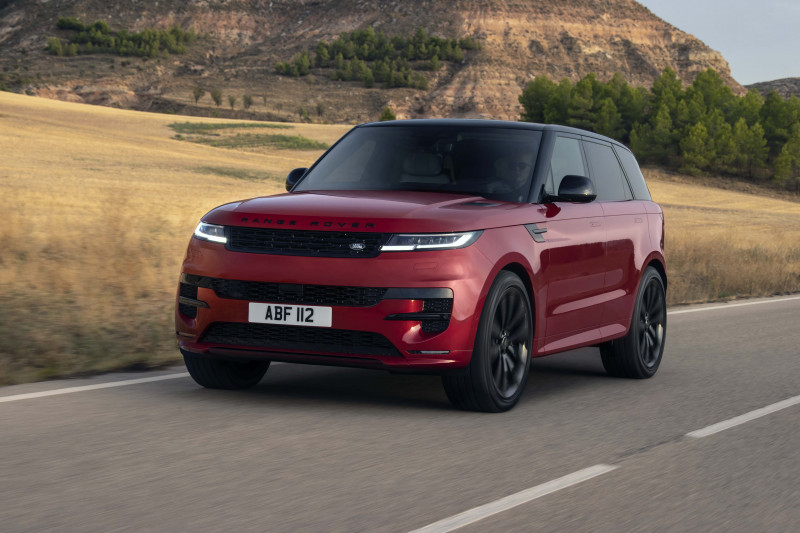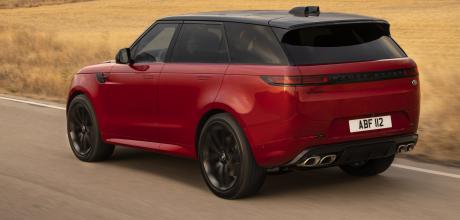2023 Range Rover Sport P530 First Edition L461
There’s a new Range Rover Sport and this is the sportiest version so far, with a new, BMW-sourced 4.4-litre V8 engine. But can it rival the best performance SUVs?
Are we secret performance SUV fanboys? Protesting to the point of distraction, hoping you won’t notice our hidden-in-plain-sight addiction to 2500kg behemoths with the dynamics of a supertanker and an image as palatable as a pub chain’s mid-week meal deal?
I raise it only because a reader asked me. We have, after all, run performance versions of SUVs on evo’s Fast Fleet ever since the original Cayenne Turbo came to stay over a decade ago. There’s been the odd Range Rover, including the Sport, too, and for some unfathomable reason, an Evoque. Alfa Romeo Stelvio Quadrifoglio, Aston Martin DBX, Jaguar F-Pace SVR, a couple of Skoda Kodiaq vRSs, and a very orange Lamborghini Urus have all been through the car park gates. In 25 years that’s more SUVs than 911s to grace the Fast Fleet pages.

We haven’t actually road-tested as many SUVs as we have 911s. Primarily because it’s a shallow pool in which to fish and there’s more rotten sardines than koi carp therein. Therefore, those that make it to these pages do so either because the manufacturer claims them to be as sharp as any performance car, or we know some of you need such a car in your lives and you would rather hear about it from us.
The new Range Rover Sport, then. The formula is no different to what has gone before, based on the full-fat Range Rover and sharing its near three-metre-long wheelbase created from the firm’s ‘Modular Longitudinal Architecture’. It’s 10cm shorter (and 50mm lower) thanks to shorter overhangs as a consequence of its, er, sportier design (curves, essentially). Compared with what has gone before, it looks softer and less aggressive, the automotive equivalent of having a few tattoos removed.
A multitude of engines are up for grabs, including six-cylinder petrol and diesels with varying degrees of mild and plug-in hybrid technology, there’s a full EV coming and there’s this example: the P530 with its new, BMW-sourced, 523bhp 4.4-litre twin-turbo V8. It will sell in small(ish) numbers and has performance on a par with the outgoing SVR, which will return with a 600-plus bhp M5 motor.
Filling the performance gap left by the departure of the supercharged V8, the BMW V8 provides an altogether more grown-up experience. Gone are the fog-horn histrionics on start-up and the RS3-baiting pops and bangs on the overrun. It’s more civilised, less ‘look at me’ and all the better for it. And if it feels like it lacks the scalded-cat off-the-line kick, it’s actually just as quick, the M550i’s V8 simply a more measured and civilised way to go about proceedings. For a car that squeezes the tarmac with its 2430kg kerb weight, it doesn’t hang around, its wider torque curve delivering consistent shove. Snappier shifts from the eight-speed auto would add to the sense of get-up-and-go, but as Range Rover’s vehicle engineering director, Matt Becker, says, it is not meant to be an Aston DBX rival in terms of performance.
Talking of Becker, or rather to him, he joined JLR after the hard points were well on their way to production but before the software was signed off, giving him and his team the opportunity to tune the Sport’s driving characteristics.
‘We’ve not only been able to tune it [the Sport] to give it its own identity, but the software has so much bandwidth that each individual powertrain and model has its own detailed level of tune,’ he told us. ‘We’ve even been able to tune the chassis, steering and brakes to suit the different tyres.’ To drive, it’s not as sharp or precise as a DBX and the hardware beneath you – torque vectoring by braking, active anti-roll bars and rear steering, and dual-chamber air springs – is noticeable in how hard it has to work to keep the Sport on its toes. But it no longer feels like a compromise. It doesn’t fall over when you apply lock, nor does it chase cambers or fall off crowns in the road. It reacts neatly and as one to every input.
On good roads the brake pedal can go long, a sign that you’re pushing harder than you were expecting because the Sport can now take it, and the wind noise around the A-pillar is unacceptable for a car costing £116,000 (it would be unacceptable on a Ford Focus in 1998). But there’s little else to criticise. The interior is leagues above what has gone before, the materials are to a quality Range Rover has often claimed to deliver but has rarely actually done so. And the infotainment system is now class-leading. And yes, it will still crawl up rocks and negotiate landscapes that your eyes tell you it shouldn’t.
Is it an evo car? No. It weighs too much, takes up too much room and it offers little in the way of engagement. But it wasn’t designed as one. It’s a luxury car in which to relax and haul a family in and tow with. We’re not secret fans of such cars, but when they are done right, as is the case here, we’re happy to acknowledge that for some, even some of us, they tick such a great number of boxes that it makes them hard to ignore.
TECHNICAL DATA2023 Range Rover Sport P530 First Edition L461
- Engine V8, 4395cc, twin-turbo
- Max Power 523bhp @ 5500rpm
- Torque 553lb ft @ 1800-4600rpm
- Weight 2430kg (219bhp/ton)
- 0-62mph 4.5sec
- Top speed 155mph
- Price £116,000
- + Does effortless speed and luxury very well
- — Not quite so good at the ‘sport’ bit
- Drives rating 5/5
‘It’s noticeable how the hardware has to work to keep the Sport on its toes’


